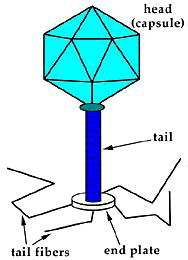
In 1898 Fredrick Loeffler and Paul Frosch found evidence that the cause of food-and-mouth disease in livestock was an infectious particles smaller than any bacteria. This was the first clue to any viruses, genetic entities that lie somewhere in the grey area between living and non-living states. Viruses depend on the host cells they infect to reproduce. When it comes in contact with a host cell, a viruses can insert its genetic material into its host, taking over the host's function.

Viruses cause a number of diseases in eukaryotes. In humans these are some examples of viral diseases; smallpox, common cold, chickenpox, Ebola, and AIDS. Viruses themselves have no fossil record, but they do leave traces in the history of life.
No comments:
Post a Comment